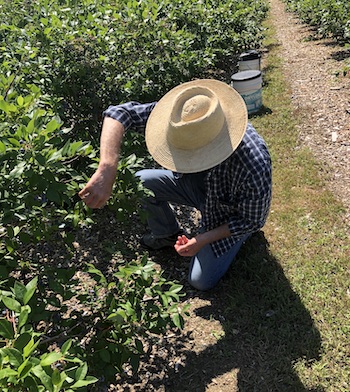Yes, indeed, starting today Kindle readers can pre-order Working the Beat, number five in my Isabel Long Mystery Series. Then magically my book will appear on their device Jan. 27, perfect timing for those in the Northern Hemisphere who are stuck inside for the worst of winter. Fans in the Southern Hemisphere can add it to their summer reading list.
Why would I want you to do a pre-order? According to Amazon, pre-orders contribute toward a book’s sale rank even before its release, which gets the word out to more readers.
To make it easy here is the link: mybook.to/workingthebeat.
Now, paperback fans are wondering: what about us? I will let you all know when they will be available, which will be long before Jan. 27.
Currently, I am still in the editing process with Miriam Drori, who has been the editor for my series. But as long as we have the cover, created by Laurence Patterson, and the synopsis for the back of the book, edited by Stephanie Patterson, we are good to begin pre-orders. The Pattersons are the brains behind darkstroke books, my publisher.
So what is Isabel Long up to in Working the Beat? She happens to be at the Titus Country Fair when she is approached by an old woman who says her grandson’s body was found four years earlier after the demolition derby. The cops say he slipped and fell down a ravine when everybody was fixed on cars smashin’ and crashin’ in the pit. Shirley Dawes doesn’t believe it.
Once again Isabel is a sucker for a sad story. Shirley Dawes brought up Lucas Page after his drug-addicted mother abandoned him. She tried to make up for the awful childhood her own kids had because of her late husband, a no-good abuser. And by what people say Lucas was a good guy.
So as Isabel pursues this case she relies on reliable sources she met during her other cases — those characters I couldn’t bear to let go like the Old Farts, Tough Cookie, the Floozie, the Beamont brothers and Dancing’ Dave. Oh Cyrus Nilsson aka the Big Shot Poet returns. Isabel meets new people, a rather unsavory group country-style who soon become suspects, and uncovers a couple of secrets. And turns out Lucas might be tied to another mystery — a string of break-ins in the hilltowns that happened months before he died.
Yes, Isabel and her 93-year-old mother, Maria, her “Watson,” are in the thick of it.
Here’s an excerpt. Isabel and her mother are at the Titus County Fair. Abe, the son of Annette Waters aka the Tough Cookie, won the pumpkin-growing contest with one weighing over 500 pounds. Shirley Dawes has already approached Isabel and now is waiting to talk with her at one of the picnic tables.
Shirley stays sitting when she sees us approach. I make our introductions, and then we take the seats opposite her at the picnic table. I make sure I’m in Shirley’s direct line of vision in case she reads lips.
“So, what did you want to talk about?” I ask.
Shirley works her mouth a bit.
“It’s about my grandson, Lucas. Lucas Page is his full name. He was killed here four years ago and whoever did it didn’t get caught.”
“Here in Titus?”
She gives her head a shake.
“I mean here at the fair. It was after the demolition derby, the first one they had. They found Lucas’s body the next morning behind where everybody watches, in the woods up there. They said he must’ve been drunk and fell down in the rocks. His head was hit real bad I was told.”
“What was he doing on the hill afterward? Was he alone?”
“That’s what I want you to find out.”
This story’s coming back to me now. I was the editor of the Daily Star then. We reported on an unattended death at the fair in a story that made the front page, and then like Shirley said, it was ruled an accident because of a brain injury, although she protested that in a story we ran, too.
“Now, I remember you, Shirley. You came to see me in the newsroom. You said you were frustrated the police didn’t seem to be looking that hard into your grandson’s case and you wanted us to do that.”
I think back and hope I treated this woman nicely.
“Yeah, I did. You said newspapers don’t do that kind of work.”
“No, not the one I worked for.”
“But I heard about what you’ve been doin’ now as a private investigator. Your last case was a doozy. Read about it in the paper.” She crooks a thumb toward Annette and her son, still talking with his admirers. “Course, there was Chet Waters. Maybe you can do what the cops couldn’t or wouldn’t do.”
“You mean find out what happened that night with your grandson.”
“Yeah. I heard you get paid for doin’ this. I wanna hear how much. I ain’t got a lot. But this is important to me. I loved my grandson. I’m the one who brought him up after his mother gave him to me. He was hangin’ around with a rough crowd in those days. Tryin’ to fit in. Here. Let me show you his picture.”
Shirley reaches for the purse on the seat beside her. The purse is vintage style, off white with a smart clasp on the top, no zippers, something my mother would use. I am guessing Shirley holds onto things. She removes a photo from her wallet and hands it to me.
“I took it at Christmas, the last one we had,” she says.
Lucas Page’s face smiles at me. He’s young, naturally, blue-eyed, and with the kind of features that would label him a good-looking guy. His most distinctive is the red hair that’s short on the sides and long enough on the top so it has a bit of curl. But back to that smile. He was happy to pose for his grandmother.
“He was a handsome young man,” I tell Shirley.
She swipes away a tear.
“Yeah, he was.”
I glance at my mother. She’s interested, of course. The questions are forming in my brain, but this isn’t the time to ask them. Already a parade of people I know have passed by with a wave, a hello, and a curious expression on their faces as they wonder why in the heck my mother and I are talking with this woman. They’re just being nosy New Englanders as usual.
“Shirley, we’re interested, but this isn’t the best place to talk. We need some privacy. How about my mother and I come to your home to talk this over?”
“What’d you say? My house?”
“Yes, your house. Well, you could come to ours if you prefer. We live in Conwell. But it would help us if we could see where you and your grandson lived. I should also tell you that if I’m interested in taking your case, I have to clear it with my boss. Do you know Lin Pierce?” I pause as she nods. “He gets a small cut of whatever I make. So, he has a say.” I register the concern in Shirley’s narrowed eyes. “Don’t worry. He hasn’t turned me down yet.”
“I understand,” she says. “Can’t do it tomorrow. I’m helpin’ out in the kitchen here. Monday mornin’ work for you?”
Ma and I exchange glances.
“How about ten?” I say.
“Ten, it is. Do you mind if I make a copy of your grandson’s photo with my phone?”
“Go right ahead if it helps.”
I place the photo on the table and remove my cell phone from my bag to take a shot before I hand the photo back to Shirley.
“Here you go.”
Shirley leaves us after she gives me directions to her house in West Titus. She lives on one of those dead-end dirt roads, hers is the last house, that’s also likely one of the last to be plowed in the winter and impassable at times in the spring because of the mud. But she’s probably one of those people who doesn’t mind because she wants to live out of the way of everybody. I don’t have to worry about road conditions this time of year. The road’s been graded recently she told me.
I wait until Shirley is out of earshot as she moves inside the crowd that’s wandering the fairgrounds. She stops first at the pumpkin display, where Annette and Abe are still hanging out.
“What’s your opinion, Ma?”
“I like her. She’s a little rough around the edges like a lot of the people we meet here,” she says. “But it’s about time we found a new case. It was getting a little boring.”
I smile. My 93-year-old mother is game for a new mystery to solve.
I hope this inspires you to read Working the Beat, number five in the Isabel Long Mystery Series.






